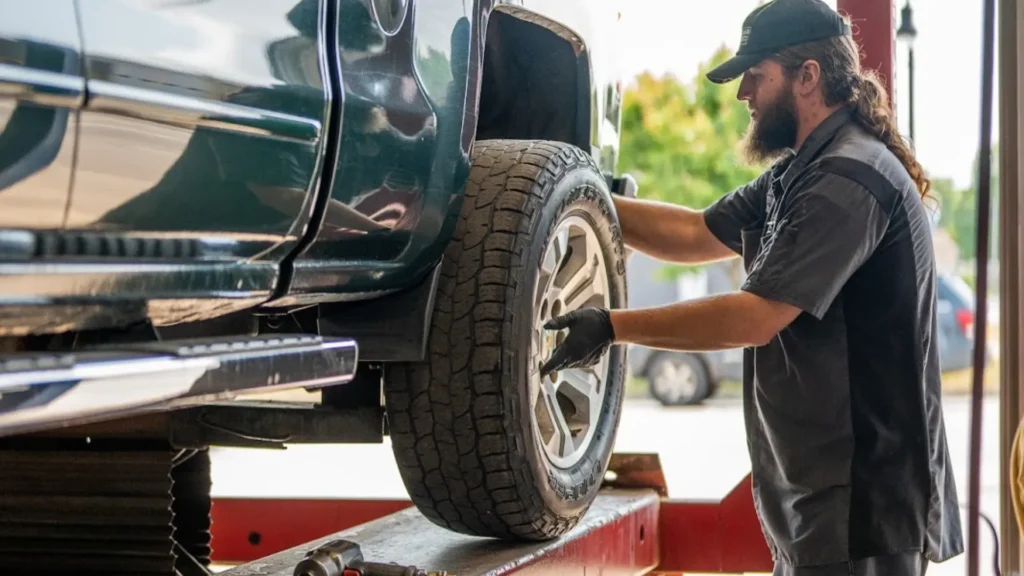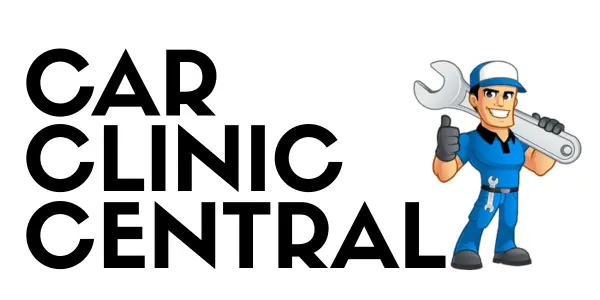Honda A17 Service (Checklist, Cost, and Code Info) 2025
When it comes to keeping your Honda running smoothly, understanding the A17 service code is essential for every owner. Whether you’re cruising down the highway or navigating city streets, regular maintenance ensures that your vehicle remains in top-notch condition.
But what exactly does the Honda A17 Service entail? With a mix of oil changes, tire rotations, and key inspections, this service package is designed to enhance performance and prolong the life of your beloved ride.
Dive into our comprehensive guide that breaks down everything you need to know about the A17 Service— from costs and checklists to DIY tasks that can save you money! Let’s get started on making sure your car stays as reliable as ever.
What Does the Honda A17 Service Code Mean?
The Honda A17 Service Code is a vital indicator of your vehicle’s maintenance needs. Specifically, it signals that your car requires an oil change along with several other essential checks.
This service code typically appears on the dashboard when it’s time for routine maintenance. It serves as a reminder to keep your vehicle in optimal condition.
With the A17 code, you’re not just changing the oil; you’re also addressing critical components like filters and fluids. This holistic approach helps prevent potential issues down the road.
Paying attention to this service code can ultimately enhance performance and fuel efficiency. Regularly adhering to these guidelines ensures that every drive remains smooth and safe.
Honda A17 Service Checklist
| Checklist Items | ✔ |
|---|---|
| Replace engine oil | ✔ |
| Rotate tires | ✔ |
| Replace brake fluid | ✔ |
| Inspect front and rear brakes | ✔ |
| Inspect parking brake adjustment | ✔ |
| Check and top off all fluids | ✔ |
| Inspect suspension components | ✔ |
| Inspect steering components | ✔ |
| Inspect driveshaft boots and CV joints | ✔ |
| Inspect exhaust system for leaks/damage | ✔ |
| Inspect fuel lines and connections | ✔ |
| Inspect radiator, hoses, and cooling | ✔ |
| Inspect lights and indicators | ✔ |
| Inspect windshield wipers/washer system | ✔ |
| Check underbody for rust or damage | ✔ |
The Honda A17 Service Checklist is essential for maintaining your vehicle’s performance and reliability. It covers several key maintenance tasks that keep your car running smoothly. First up is the oil change. Fresh oil ensures proper engine lubrication, which helps in reducing wear and tear over time.
Next, there’s the tire rotation. This task promotes even tire wear, extending their life while enhancing driving stability. Brake fluid replacement is another vital component. Old brake fluid can compromise braking efficiency, so refreshing it keeps you safe on the road.
Additional visual inspections are part of this checklist. Technicians will look at various systems like brakes, suspension components, and belts to catch potential issues before they escalate.
Staying on top of these tasks not only maintains performance but also boosts resale value down the line!
Oil Change & Oil Filter Change
An oil change is a fundamental part of the A17 Service. Fresh oil keeps your engine running smoothly and efficiently. Over time, motor oil degrades as it picks up dirt and debris, losing its protective properties.
During an oil change, it’s not just about replacing the old oil; changing the oil filter is equally essential. The filter traps contaminants that can harm your engine components. Using a high-quality filter ensures optimal performance.
Most Honda models recommend synthetic or semi-synthetic oils for better protection and longevity. Following these guidelines helps maintain peak performance while extending engine life.
Checking your owner’s manuals provides specific recommendations on the type and amount of oil required. Regular changes promote fuel efficiency and reduce emissions, making them good for both your wallet and the environment. Don’t overlook this vital aspect of maintenance during A17 service!
Tire Rotation
Tire rotation is a crucial aspect of vehicle maintenance that often gets overlooked. It involves switching the positions of your tires to ensure even wear over time. This helps extend their lifespan and enhances safety on the road.

Different vehicles may require specific patterns for tire rotation, depending on whether they are front-wheel drive, rear-wheel drive, or all-wheel drive. Following manufacturer guidelines is essential for optimal results.
Regularly rotating your tires can improve handling and fuel efficiency. When tires wear evenly, you’ll notice better traction and stability during drives.
Many automotive experts recommend rotating tires every 5,000 to 7,500 miles or with each oil change. Keeping this routine will benefit both your wallet and driving experience in the long run.
Don’t forget—performing rotations at a trusted service center ensures that any underlying issues are also addressed while maintaining tire health.
Brake Fluid Replacement
Brake fluid replacement is a critical part of the service A17 Honda. It ensures your braking system operates smoothly and effectively. Over time, brake fluid can absorb moisture from the air, leading to reduced performance.
When moisture contaminates the brake fluid, it decreases the boiling point. This can result in brake fade or complete failure under high-stress conditions. Regularly replacing this fluid helps maintain optimal braking efficiency.
The process typically involves bleeding the brakes to remove old fluid and air bubbles trapped within the lines. Fresh, clean brake fluid should be added to ensure proper function.
It’s essential not to overlook this task as it plays a vital role in vehicle safety. If you’re unsure when you last replaced your brake fluid, it’s best to check during routine services like the A17 code maintenance checkup.
Additional Visual Inspections
During the Honda A17 Service, additional visual inspections play a crucial role in maintaining your vehicle’s health. Technicians take a close look at various components to ensure everything is functioning as it should.
They check the belts and hoses for any signs of wear or cracking that could lead to bigger problems down the road. Inspecting fluid levels is also essential; low coolant or brake fluid can indicate leaks that require immediate attention.
The brakes get special scrutiny too. Pads, rotors, and lines are examined to guarantee optimal performance and safety on the road.
Tire tread depth and condition are assessed as well, ensuring you have adequate grip during drives. Regular visual checks help catch issues early before they escalate into costly repairs. This proactive approach keeps your Honda running smoothly for years to come.
Honda A17 Service Cost (By Vehicle and Location)
The cost of Honda A17 Service can vary significantly based on vehicle model and location. Generally, you might expect to pay anywhere from $100 to $300 for this service.
For compact models like the Honda Civic, costs tend to be on the lower end. Larger vehicles such as the Honda Pilot may push that price higher due to additional labor and parts required.
Location also plays a crucial role in determining service costs. Areas with a high cost of living typically see increased prices at dealerships or certified mechanics compared to rural locations.
Always check with local Honda dealers or trusted auto shops for precise estimates tailored to your specific vehicle and area. This way, you can budget effectively without any surprises down the road.
How Often Should A17 Service Be Done?
The A17 service for Honda is crucial for keeping your vehicle in top shape. Typically, it’s recommended every 15,000 miles or once a year, whichever comes first.
This interval might vary based on driving conditions. If you frequently drive in heavy traffic or extreme weather, more frequent service could be beneficial. Pay attention to your owner’s manual; it provides specific guidance tailored to your model. Staying proactive helps prevent costly repairs down the line.
If you’re unsure about timing, monitor your dashboard indicators. They often alert you when maintenance is due. Regular A17 service ensures that essential components are checked and maintained properly for optimal performance and safety on the road.
Can You Do the A17 Service Yourself?
Performing the Honda A17 service yourself can be tempting, especially for DIY enthusiasts. Some of the tasks are straightforward and manageable with basic skills.
Changing the oil and oil filter is one of these tasks. With a few tools, you can easily drain old oil and replace it with fresh lubricant. This step ensures your engine runs smoothly. Tire rotation is another task that many car owners tackle themselves. It requires minimal equipment—a jack and some tire irons—and helps extend tire life.
However, brake fluid replacement isn’t as simple. It involves precise handling to ensure safety in braking performance. It’s best left to professionals who have experience in this area. Before diving into any DIY project, assess your comfort level with mechanical work and consider if you have all necessary tools on hand.
Why A17 Service Is Important for Longevity
Regular A17 service is crucial for your Honda’s longevity. This service ensures that essential components remain in optimal condition. When you adhere to the recommended maintenance schedule, you reduce wear and tear on vital systems.
Skipping routine checks can lead to significant problems down the line. For instance, neglecting oil changes may cause engine sludge buildup. This could result in costly repairs or even complete engine failure.
Moreover, tire rotation helps maintain even tread wear and improves fuel efficiency. Brake fluid replacement enhances safety by ensuring responsive braking performance when you need it most.
Consistent A17 servicing not only extends the life of your vehicle but also enhances overall driving experience. Investing time and resources into your car’s upkeep pays off in reliability and performance over years of use.
Final Words
Maintaining your Honda is crucial for its performance and longevity. The A17 service offers a comprehensive approach to keeping your vehicle in top shape. Understanding the specific tasks involved helps owners stay informed. Knowledge of the A17 service code can prevent unnecessary complications down the line.
Taking care of essential maintenance items like oil changes, tire rotations, and brake fluid replacements ensures that you’re driving safely and efficiently. For those who prefer hands-on work, some tasks can be done at home with the right tools and materials. This not only saves money but also provides a sense of accomplishment.
Prioritizing regular maintenance through services like A17 is an investment in both safety and reliability on the road. Your Honda deserves it!
Frequently Asked Questions
What does the Honda A17 service code indicate?
The Honda A17 service code signals a specific maintenance interval for your vehicle, typically indicating that it’s time for a comprehensive check-up focused on oil changes and various inspections.
How much does the Honda A17 service cost?
The cost can vary based on location and model but generally ranges from $150 to $300. Checking with local dealerships or certified mechanics will give you accurate estimates tailored to your vehicle.
Is the A17 service necessary for all Honda models?
While many newer models display this code, it’s essential to consult your owner’s manual or dealer to understand whether your specific model requires this level of maintenance.
Can I perform an oil change myself during the A17 service?
Yes, changing the oil is one of the tasks that many car owners feel comfortable doing themselves. Ensure you have all necessary tools and follow manufacturer guidelines.
How often should I expect my Honda to show the A17 code?
Typically, vehicles will prompt an A17 service every 15,000 miles or so. However, checking your owner’s manual is always best as driving conditions can affect timing.
Related Articles:
Hill Start Assist Not Available
7E8 Engine Code

Kevin Morgan is an ASE-certified automotive engineer and blogger with over 15 years of experience in vehicle systems design, performance testing, mechanics, and diagnostics. He is deeply passionate about automotive excellence. As a contributing author at CarClinicCentral, Kevin shares his expertise with enthusiasts, providing valuable market insights, updates, and trends.


![7EA Engine Code: Causes, Diagnosis, and Solutions [2025] 4 7ea engine code](https://carcliniccentral.com/wp-content/uploads/2025/09/7ea-engine-code-768x432.webp)
![Mercedes B5 Service: Cost & Checklist [Extensive Guide] 2025 5 mercedes b5 service](https://carcliniccentral.com/wp-content/uploads/2025/08/mercedes-b5-service-768x432.webp)
![Power Steering Assist Fault: Signs, Causes, and Fixes [2025] 6 power steering assist fault](https://carcliniccentral.com/wp-content/uploads/2025/09/power-steering-assist-fault-768x432.webp)
![Mercedes A9 Service: Cost, Checklist, And Code [Guide 2025] 7 mercedes a9 service](https://carcliniccentral.com/wp-content/uploads/2025/08/mercedes-a9-service-768x432.webp)
![Mercedes B1 Service: Checklist, Cost, And Code [Explained] 8 mercedes b1 service](https://carcliniccentral.com/wp-content/uploads/2025/08/mercedes-b1-service-768x432.webp)
![Mercedes B3 Service: Checklist & Cost [Detailed Guide] 2025 9 Mercedes B3 Service](https://carcliniccentral.com/wp-content/uploads/2025/07/Mercedes-B3-Service-768x432.webp)